
INVESTIGATING HISTORY:
RECOVERED RELIC OF JAPANESE WWII TYPE 98 KYUHACHI-SHIKI IMPERIAL ARMY OFFICER’s KATANA SWORD – バンバンで日本軍の98式将校用刀が発見される。
The western sector of the Bamban poblacion anchored the Central Force of the Takayama Detachment, where 3,600 seasoned Japanese mobile infantry forces from the 2nd Mobile Infantry Regiment, along with the troops from the 137th Airfield Battalion (reinforced), 25th Independent Tank Battalion and 2nd Machine Cannon unit were deployed to protect the northern Kembu Defense area and the gateway to Clark Field in January 1945.
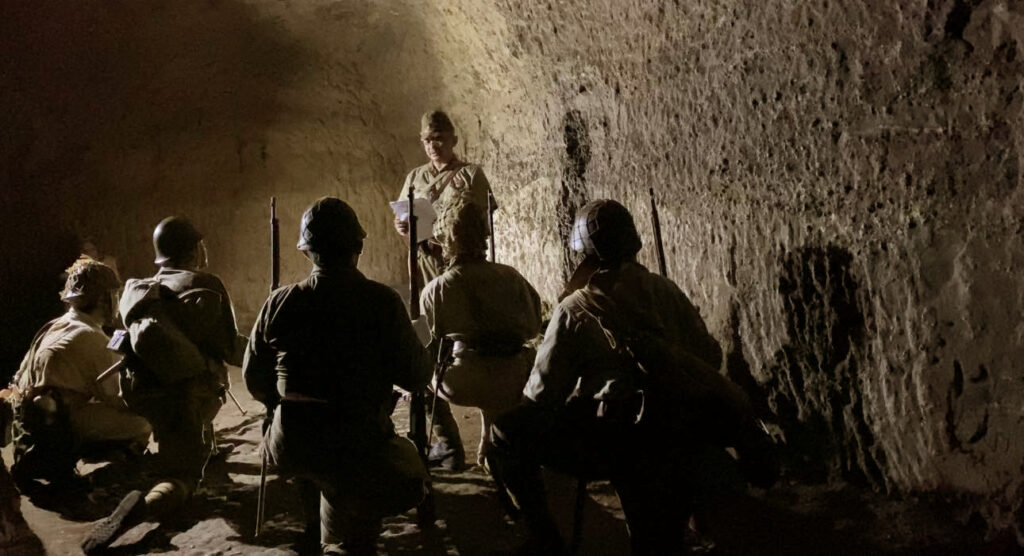
In the area between the old settlements of the Panaisan and Mainang, became part of the area of the Japanese Takayama’s Hoshino Butai and the basement for the 25th Independent Anti-Tank Battalion and the 2nd Machine Cannon Unit.
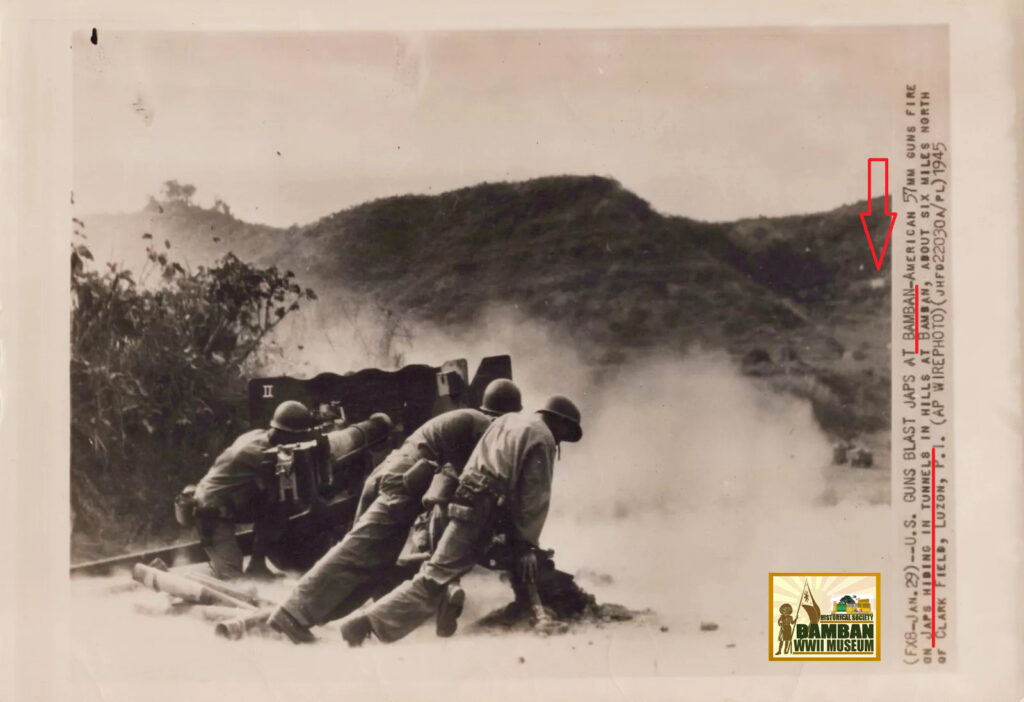
Photograph courtesy of John Duresky.
With the landing of General MacArthur’s Sixth Army on January 9, 1945, the advance to Clark Field, with the Bamban as its entrance, became an important combat mission for the liberating forces. To the Japanese Kembu Composite Division, it was the land battle they had been waiting for and anticipated, after the loss of their air assets and facilities in the aftermath of the air war in late 1944.
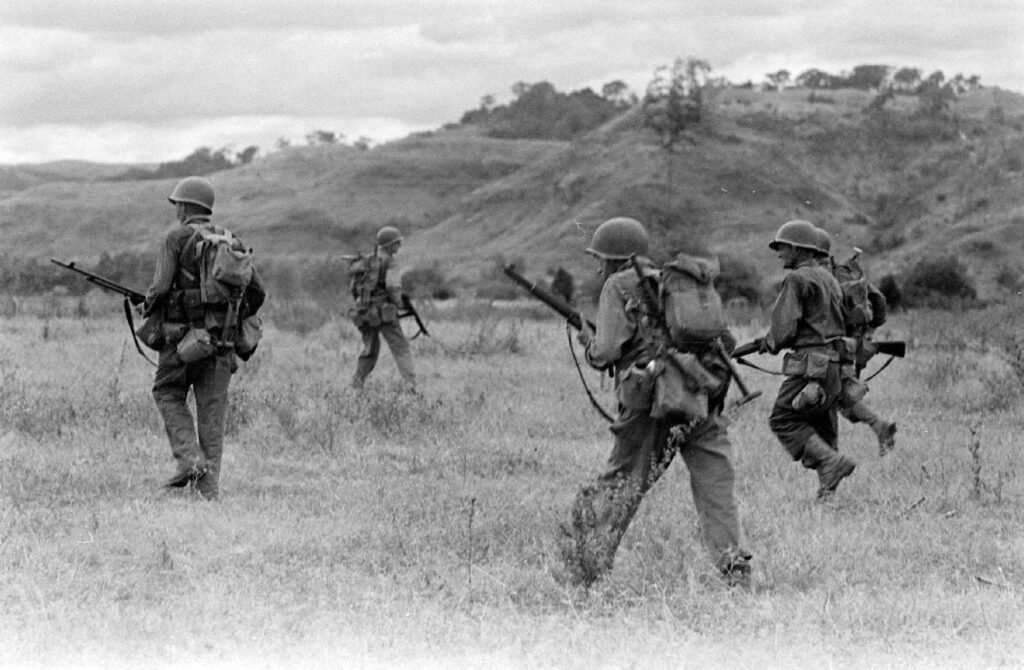
Carl Mydans Photo.
The Liberation of Bamban on January 23, 1945 had established General MacArthur’s forces under the 40th Division for a base of operations to conduct infantry, artillery and tank and mortar attacks on the Japanese lines. West of the town, the Takayama Detachment made a strong stand on its tunnel defenses, while their artillery, anti-tank and automatic cannon provided the necessary defensive firepower against the 40th Division massive combat operations on the front and flanks.
Many of the Japanese defenders from the Takayama Detachment were killed in the battle, almost all of them were entombed inside the crevices and tunnels sealed by the massive bombardments.

The Battle of Bamban Hills 1945 was just one of the ferocious fights in the Philippines in WWII, about 80 years ago. This morning, a Japanese TYPE 98 KYUHACHI-SHIKI Imperial Japanese Army officer’s Katana sword was saved from historical oblivion, obtained and became part of the permanent display for our WWII Museum.
It was originally found inside a Japanese WWII tunnel southwest of Panaisan, which became the basement of Takayama Shitai’s 25th Independent Anti-Tank Battalion (commanded by Capt. Sata) and 28th Independent Cannon Unit (commanded by Capt. Matsuhara); in support for the Hoshino Butai and Kamii Butai reinforced battalions operating in the forward front overlooking the highway of the Bamban.
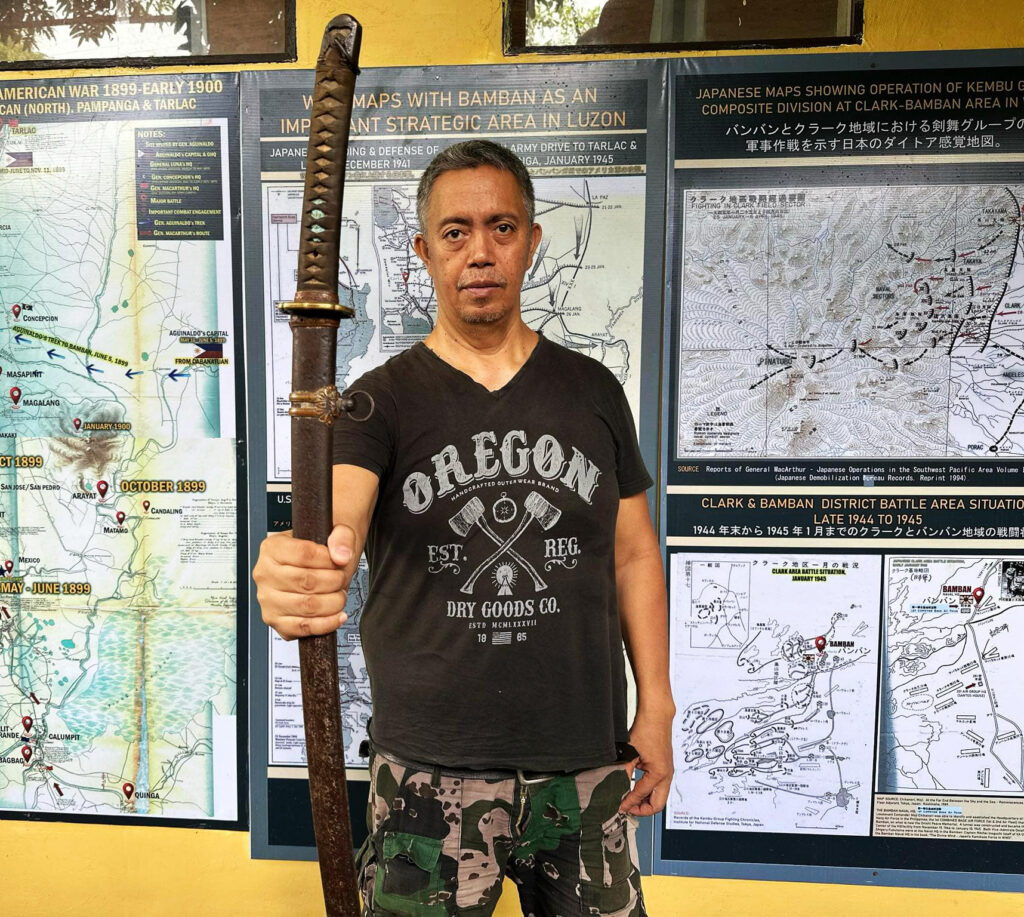
The farmers who found the relic of this TYPE 98 Katana recounted their narratives that an opening of the tunnel was found several years ago and conducted further survey inside, only to find the Katana at the end of the tunnel.
The TYPE 98 was in relatively good condition, with the basic parts still intact, albeit there are already visible signs of wear-off on the blade (sori), handle(tsuka) and on the end of blade (kissaki). Overall, it is still an important artifact of the war that was fought ferociously in our town, where are grandfathers and uncles were involved to become part of that History in WWII.
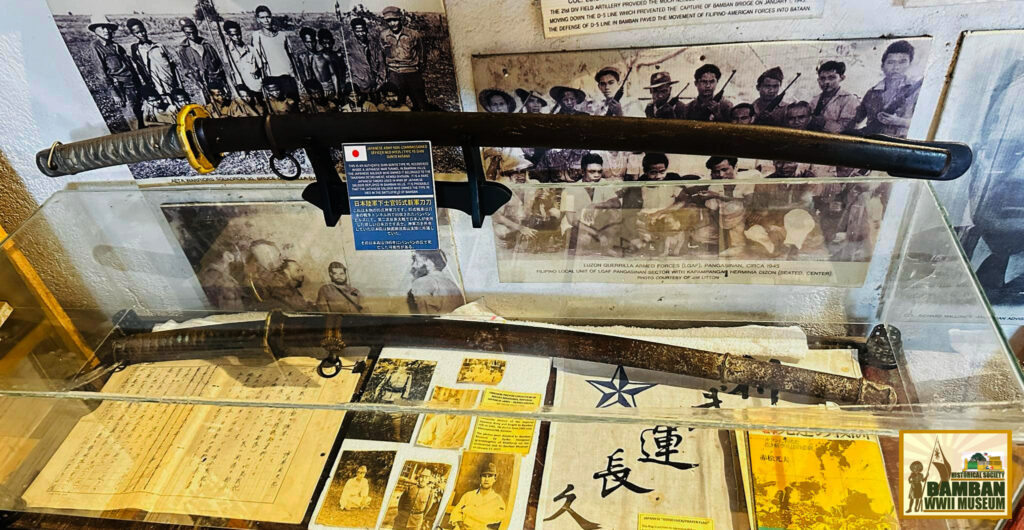
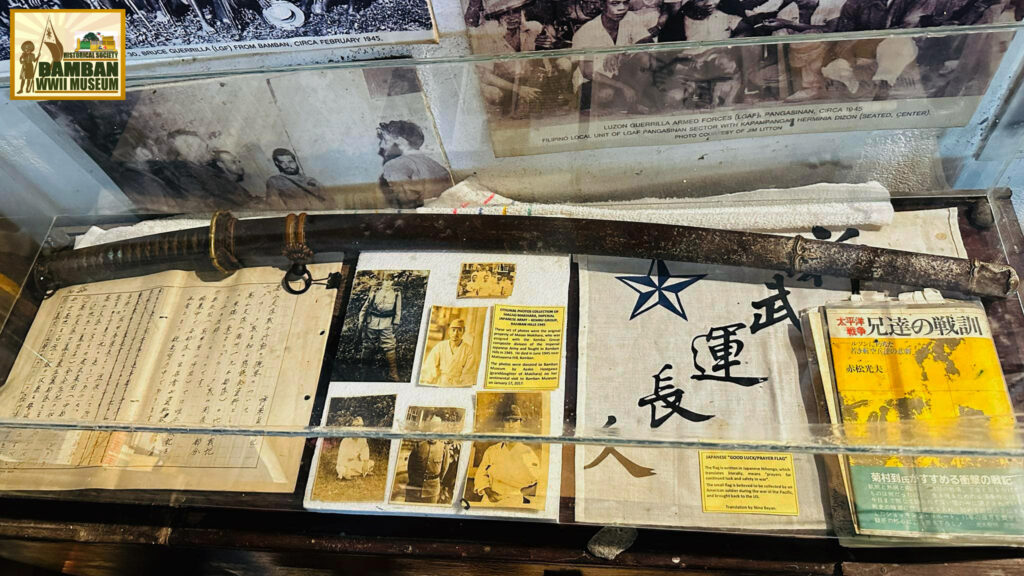
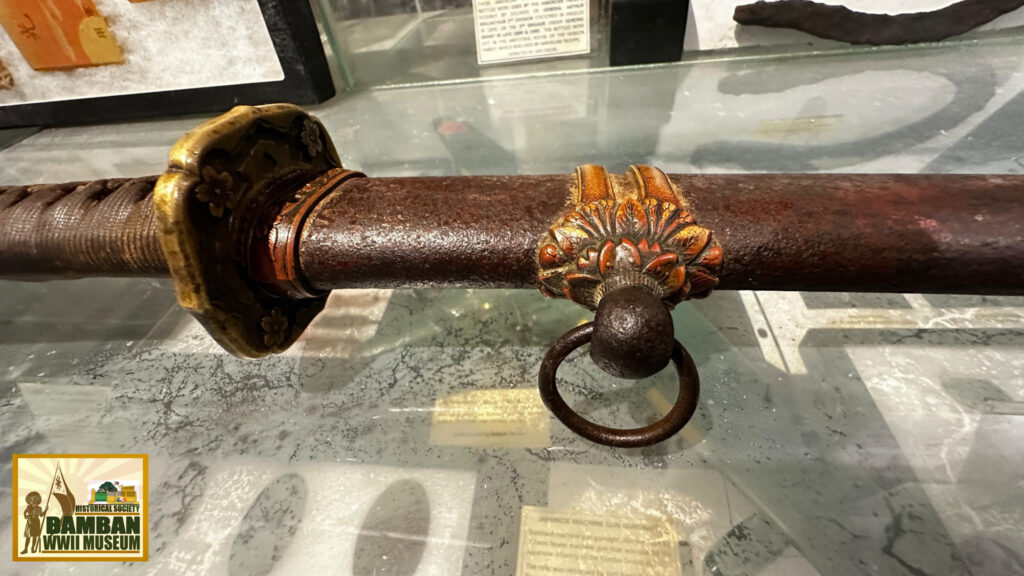
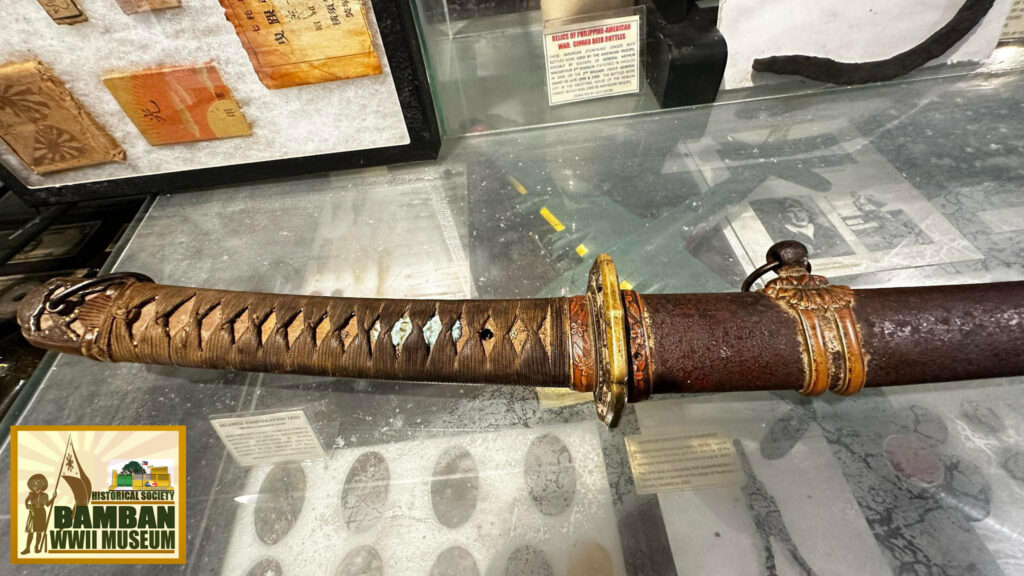
The Type 98 Shin Guntō (九八式軍刀, Kyuhachi-shiki guntō) was an officer sword and in 1945, a typical of the swords of the Japanese army offices in the Kembu Group, particularly at the Takayama Detachment, the Eguchi Detachment and the airborne paratroopers Takaya Detachment.
The Type 98 was originally produced in mass production and machine made in 1938, and had a wooden scabbard, metal ornaments, and blackened iron or copper fittings, many of which were issued as military swords for army officers.
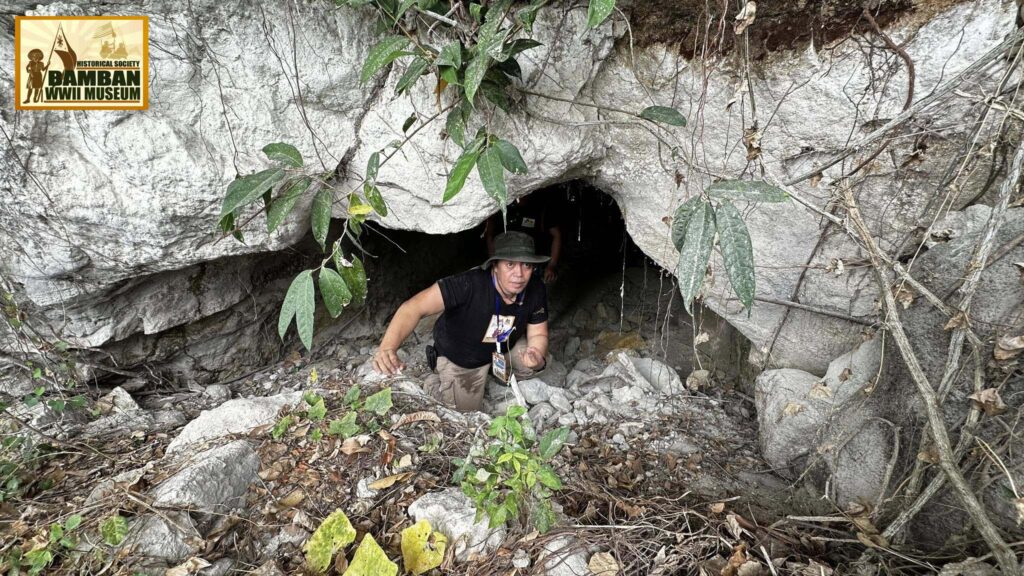
The whole day was dedicated in studying this Type 98 and is now in permanent exhibit at our WWII Museum, a testament to our dedication in preserving WWII history.
We would like to extend our sincere thanks to our museum volunteers and supporters who helped in preserving this piece of our WWII history: Ka Lando, Mr. B. Mallari, Mr. J. Galang, Chung De Ruan, Doc. JD Timbol and Robert Pecson.
©RHONIE C. DELA CRUZ
2025 Bamban Historical Society
Bamban WWII Museum
Center for Pacific War Studies
PGT – Tarlac Provincial Tourism Office

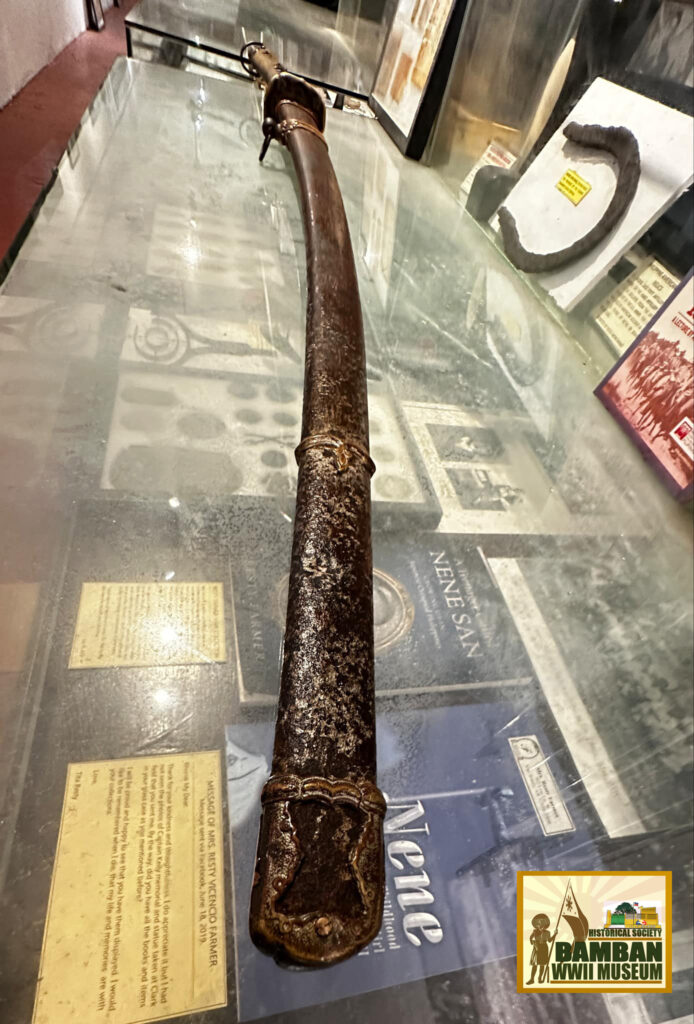
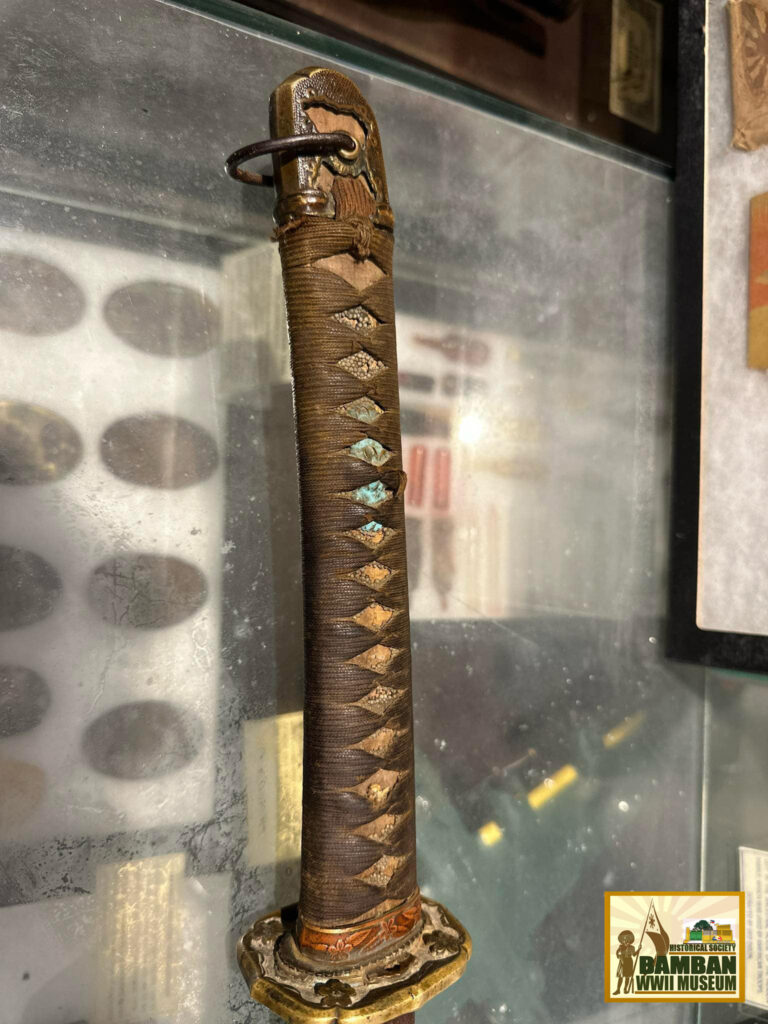
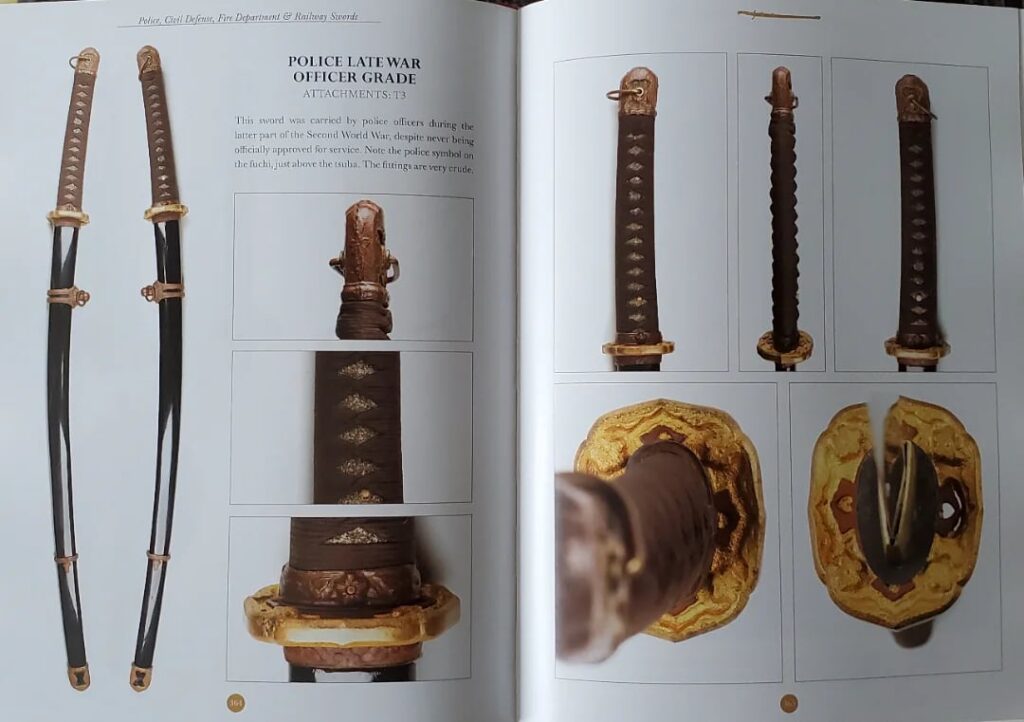
Sources:
(1) Clark District Area Battle Situation – January 1945. Official Record of the Japanese Kembu Group. The National Institute for Defense Studies, Tokyo, Japan. Bamban Historical Society Collection, Bamban Museum.
(2) History of the 40th Division in the Philippines.
(3) Takayama Shitai Operational Order A No. 6 From January 14-20, 1945, captured documents translated by 40th Division Language Office, U.S. National Archives NARA, Bamban Historical Society Collection.
Photographs:
(1-3) Taken at Bamban WWI Museum, showing the Type 98 in display.
(4) Japanese Takayama Detachment inside a war tunnel taken during re-enactment in 2022. The scene is typical of the situation at the Bamban inside the tunnels prior the battle between the Takayama and the US 40th Division in late January 1945. Courtesy of the War Heritage Guild – Philippines.
(5) “US Guns blast Japanese positions at Bamban”, in support of the 3rd Battalion, 160th Infantry attack on Japanese Takayama Detachment positions. The Japanese officer who owned the Type 98 may had experienced the struggle in surviving massive aerial, artillery and tank fires in Bamban Hills.
Photograph courtesy of John Duresky.
(6) American soldiers, most probably from the 160th Infantry, 40th Division, clearing Japanese pockets from the Takayama Detachment near Panaisan, where the Type 98 was recovered.
Carl Mydans Photo.
(7) A Japanese tunnel at the Bamban Hills, captured by American soldiers in 1945.
(😎 To this day, Bamban WWII Museum Field Recon and Investigating Team continue to conduct studies and survey of Japanese WWII tunnels.
(9-15) Details of the Type 98 taken at the WWII Museum. Rhonie Dela Cruz photos.
(16) Literature for the Type 98. Courtesy of Mr. De Ruan.

